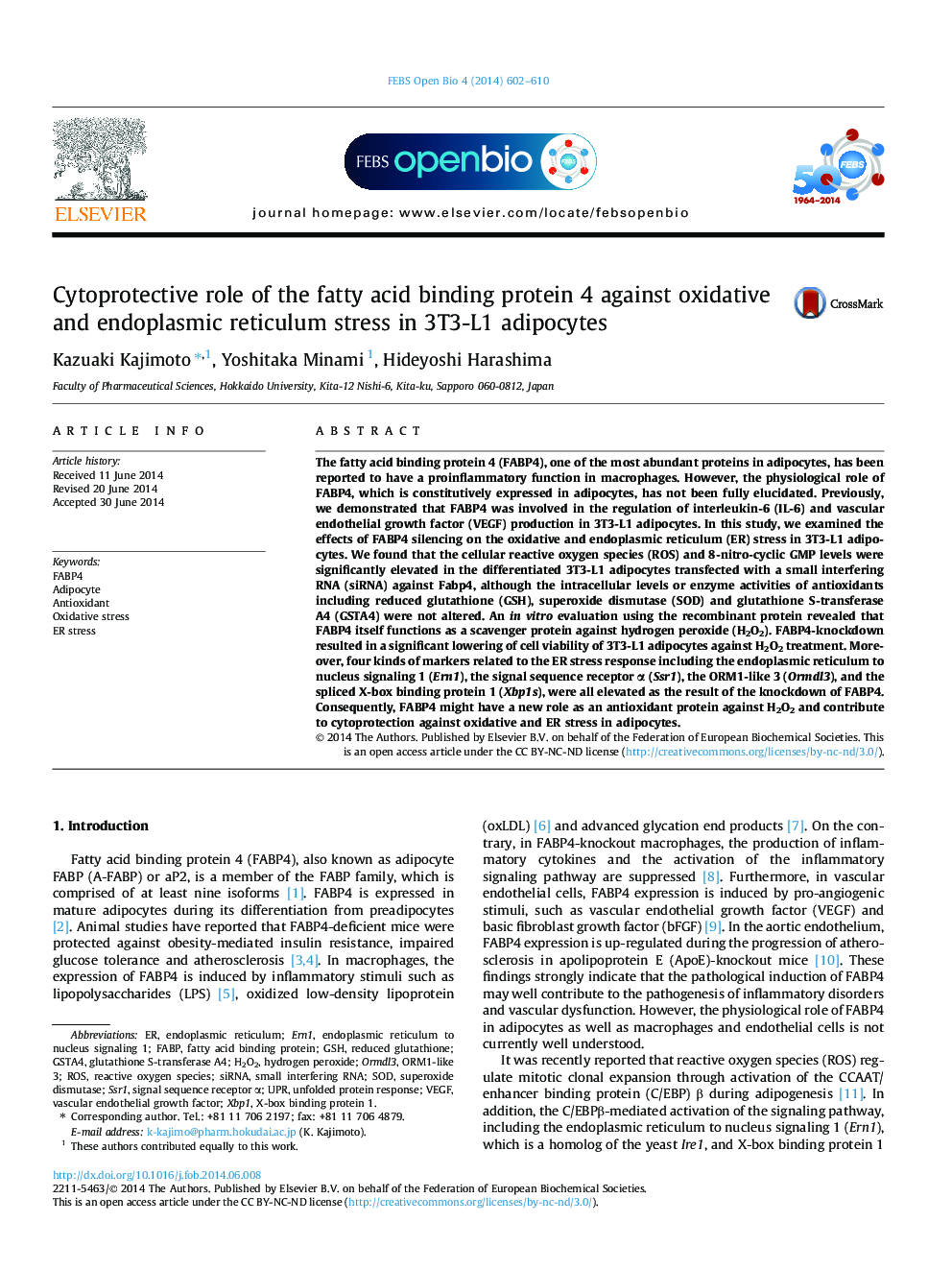| کد مقاله | کد نشریه | سال انتشار | مقاله انگلیسی | نسخه تمام متن |
|---|---|---|---|---|
| 1981722 | 1539420 | 2014 | 9 صفحه PDF | دانلود رایگان |

• Oxidative stress in 3T3-L1 adipocytes was elevated by silencing of FABP4.
• FABP4 silencing did not alter levels of glutathione or superoxide dismutase.
• The recombinant FABP4 significantly reduced levels of hydrogen peroxide.
• The resistance of adipocytes to oxidative stress was decreased by FABP4 knockdown.
• Silencing of FABP4 elevated the endoplasmic reticulum stress in adipocytes.
The fatty acid binding protein 4 (FABP4), one of the most abundant proteins in adipocytes, has been reported to have a proinflammatory function in macrophages. However, the physiological role of FABP4, which is constitutively expressed in adipocytes, has not been fully elucidated. Previously, we demonstrated that FABP4 was involved in the regulation of interleukin-6 (IL-6) and vascular endothelial growth factor (VEGF) production in 3T3-L1 adipocytes. In this study, we examined the effects of FABP4 silencing on the oxidative and endoplasmic reticulum (ER) stress in 3T3-L1 adipocytes. We found that the cellular reactive oxygen species (ROS) and 8-nitro-cyclic GMP levels were significantly elevated in the differentiated 3T3-L1 adipocytes transfected with a small interfering RNA (siRNA) against Fabp4, although the intracellular levels or enzyme activities of antioxidants including reduced glutathione (GSH), superoxide dismutase (SOD) and glutathione S-transferase A4 (GSTA4) were not altered. An in vitro evaluation using the recombinant protein revealed that FABP4 itself functions as a scavenger protein against hydrogen peroxide (H2O2). FABP4-knockdown resulted in a significant lowering of cell viability of 3T3-L1 adipocytes against H2O2 treatment. Moreover, four kinds of markers related to the ER stress response including the endoplasmic reticulum to nucleus signaling 1 (Ern1), the signal sequence receptor α (Ssr1), the ORM1-like 3 (Ormdl3), and the spliced X-box binding protein 1 (Xbp1s), were all elevated as the result of the knockdown of FABP4. Consequently, FABP4 might have a new role as an antioxidant protein against H2O2 and contribute to cytoprotection against oxidative and ER stress in adipocytes.
Journal: FEBS Open Bio - Volume 4, 2014, Pages 602–610